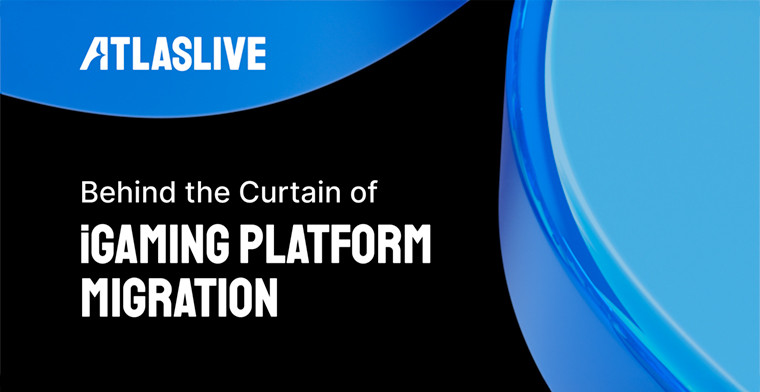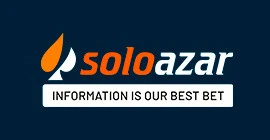Behind the Scenes of iGaming Platform Migration: What Really Happens When You Move, by Atlaslive
Monday 11 de August 2025 / 12:00
2 minutos de lectura
(Lisbon).- Transitioning an iGaming platform often brings uncertainty. Could it lead to reduced traffic? Will the user interface and front-end undergo major changes? Might user retention suffer? Are there unforeseen risks? At Atlaslive, what appears to be a complicated and high-risk endeavor is actually a well-structured process with clear, manageable stages. With a strategic mindset, migration becomes an opportunity to reinforce the foundation for future growth rather than a source of disruption.

This article takes a look behind the scenes at the big promises and even bigger fears associated with migrating an iGaming platform. We'll discuss what data is actually worth transferring, why communication is just as important as code, and how infrastructure choices influence the long-term success of the move.
Here are some key points for operators to keep in mind:
Migration is a process that depends on preparation: the right tools and planning make all the difference.
Historical records can be important, and some operators prefer to retain them. Still, it's worth reviewing together what data is actively needed in the new system to ensure the migration process runs smoothly.
Clear messaging and planning for downtime prevent user churn.
Migration doesn't end with launch. Continuous testing, fine-tuning, and user monitoring are essential for long-term ROI.
Let's walk through the reality of a modern platform migration.
When It Might Be Time to Migrate Your iGaming Platform
Over time, small frustrations with the current platform can become real hurdles, and in an industry as dynamic as iGaming, hesitation can be costly.
These are some of the most common reasons operators consider migrating:
Scalability issues. If your traffic grows but the platform can't keep up and crashes during high-volume events, it's a sign that the infrastructure is no longer fit for purpose.
Stability issues. Frequent downtime, buggy deployments, or unpredictable behavior during peak times erode the trust of both players and partners.
Support gaps. When technical support becomes difficult to reach or lacks the depth needed to resolve real issues, daily operations suffer.
Compliance and certification delays. Entering regulated markets requires a partner that can act quickly on technical audits, local integrations, and ongoing legal updates. If your current provider lags in this area, your growth will slow with it.
Need to improve collaboration. Sometimes, the tipping point isn't a single failure, but a lack of alignment. As your business becomes more sophisticated, you may find that the initial provider is outgrown.
With intense competition in the industry, even a week of inconsistent performance can impact an operator's reliability. Migration is rarely a matter of chasing the latest technology. More often, it's a smart move to avoid losing players, trust, and ultimately, revenue.
What Moves (and What Doesn't)
Migrating an iGaming platform isn't simply about transferring everything from one system to another. It's about carefully selecting what's truly needed to keep operations running and what can be safely left behind.
Basically, these are the elements that typically migrate:
User data: names, emails, account details, balances
Basic account settings: language, currency, user status
(Optional) Categories: such as risk, financial, or responsible gaming
However, one of the most discussed aspects of migration is historical data: spin records, past transactions, and bonus redemptions. While some operators request it as a precaution, the real value of the new platform can often be limited.
"Historical data may seem important at first, but migrating every line can be impractical in some cases. We often deal with millions of records per day, most of which are archived within a few months. We always discuss what data to move, arriving at the most effective decision together with our customers."
- Dmytro Matiiuk, Head of Delivery at Atlaslive
It's also important to clarify: migrating without historical data does not limit your ability to transfer critical user categories (such as financial or fraud risk categories). These can be migrated independently; we just need to attach them to the corresponding user fields with the appropriate descriptions.
Migration Phases: A Step-by-Step Overview
Although each migration has its own pace and requirements, the process typically includes these coordinated phases. Each is designed to reduce friction and ensure service continuity.
Pre-Migration Configuration
In this phase, the teams responsible for backend services, accounting/billing, and database analytics collaborate to align data structures and prepare migration scripts. Pre-migration configuration largely consists of ensuring that the data from the old platform correctly corresponds to the structure of the new one.
Initial Data Import
We follow proven parameters to maintain system responsiveness and stability during the bulk data import. Load thresholds are set based on previous benchmarks to avoid slowdowns or timeouts, which is especially relevant for partners managing large user bases.
Domain Transfer and DNS Change
At this point, timing is everything. Operators can choose between a fully assisted transfer or manage the transition internally with guidance from our team. To complete the change with minimal impact, a short planned downtime is used, typically scheduled during off-peak periods.
Testing and Launch
Once the structure is in place, we simulate load situations to confirm stability under pressure. This includes preparing for sudden spikes in traffic or usage, which some partners experience regularly.
In parallel, the front-end is aligned to maintain a familiar experience for returning users, limiting disruptions and potential churn. Just before launch, account balances are rechecked and updates are made to ensure the platform picks up exactly where users left off.
What Can Go Wrong and How to Avoid It
Even a well-executed migration can experience turbulence. That's why the process must include proper coordination across systems, teams, and timelines.
Temporary user friction. Potential user friction can be related to minor issues such as password resets or unfamiliar interface elements. However, the long-term impact depends largely on user quality and marketing strategy. If traffic is well-targeted and the new platform offers superior features, this curve is quickly corrected.
SEO disruptions. When migrating to a new platform, search performance does not automatically transfer. Since URLs, metadata, and site architecture must be rebuilt from the ground up, traffic fluctuations are common.
Operational delays. Beyond technology, human readiness is often the bottleneck. CRM teams, support agents, and payment reviewers must become familiar with new workflows. This learning curve is built into the migration schedule and can occur before the actual migration, so we schedule transitions during low-traffic periods to minimize visible downtime and reduce pressure on internal teams.
The only downtime users typically experience is a single window of up to several hours while the actual domain migration takes place. Even this is carefully scheduled to avoid peak activity in the region.
The Atlaslive formula for a successful migration
It's tempting to think it's all about the platform. But in reality, success depends more on the ecosystem surrounding it:
A smooth migration = high-retention platform + strong marketing + high-quality traffic + rapid team onboarding
When these elements come together, even challenges become temporary. And instead of disruptions, the migration becomes a launchpad for long-term growth.
Post-migration and success metrics
The migration doesn't end once the platform is live.
The first few weeks after launch are key for measuring the impact and fine-tuning performance. There's no single measure of success, but some indicators show how well the transition went.
Key metrics to monitor include:
Downtime. Was the transition completed on schedule?
Player retention. Are users returning and engaging at the expected level?
Support volume. Are there spikes in tickets that indicate friction in the user experience?
Traffic and revenue. Are acquisition and monetization stabilizing or improving?
There is often a settling-in period, but it is short-term. With the right retention tools, quality traffic, and responsive support, the trend usually normalizes.
"The success of a migration isn't judged on day one: it's measured by how effectively the system supports growth in the following months."
- Dmytro Matiiuk, Delivery Director at Atlaslive
Final Thoughts
-A platform migration is a strategic realignment. With the right approach, it allows you to update your configuration, improve performance, and ensure your tools support your long-term plans.
-Yes, migrations have moving parts. But they don't have to be chaotic. With the right partner, a clear roadmap, and thoughtful execution, the process becomes an opportunity, not a risk.
-If you're considering a platform change, we'd be happy to talk with you. Our team has done it before, in different markets and business models. Let's explore the possibilities, step by step.
Categoría:Analysis
Tags: atlaslive,
País: Portugal
Región: EMEA
Event
iGaming Club Conference Cancun
24 de November 2025
Levon Nikoghosyan Confirms iGaming Cancun’s Success and Future LATAM Expansion
(Cancun, SoloAzar Exclusive).- The vibrant energy of iGaming Cancun has set the tone for a new chapter in the Latin American iGaming industry. Levon Nikoghosyan, CEO and Co-Founder of AffPapa and iGaming Club, shared his enthusiasm for the event’s debut in Mexico, highlighting its impact on the regional market and the company’s ambitious plans for the future.
Thursday 04 Dec 2025 / 12:00
iGaming Club Cancún 2025 Concludes Successfully with Strong Connections in Its First LatAm Edition
(Cancun, SoloAzar Exclusive).- iGaming Club Cancún 2025 came to a close last night with a comprehensive experience of conferences, networking, and the AffPapa iGaming Awards LATAM gala, consolidating itself as a unique space for operators, affiliates, and providers in the region.
Thursday 27 Nov 2025 / 12:00
iGaming Club Cancún 2025: Affiliates, Operators, and Innovation Take Center Stage on Final Day
(Cancun, SoloAzar Exclusive).- The second and final day of iGaming Club Cancún 2025 unfolds today, bringing together operators, affiliates, and select B2B providers in a unique networking and conference environment that highlights the evolving dynamics of the Latin American iGaming market.
Wednesday 26 Nov 2025 / 12:00
SUSCRIBIRSE
Para suscribirse a nuestro newsletter, complete sus datos
Reciba todo el contenido más reciente en su correo electrónico varias veces al mes.




















